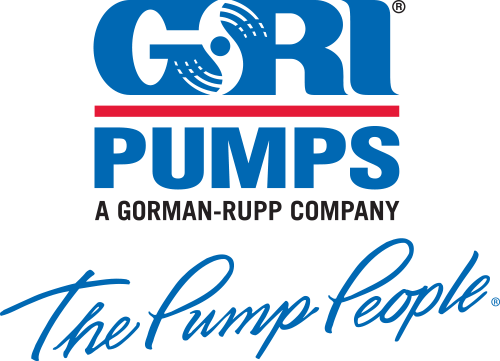The Importance of Specifying a Pump Early in the OEM Design Cycle
9/4/2018 medical oem
The Importance of Specifying a Pump Early in the OEM Design Cycle
Knowing the specific fluid pumping requirements of an OEM application upfront in the development and design cycle is important. Unfortunately, many devices and system designers neglect to consider their fluid pumping requirements until late in the design cycle.
Too often an engineer will have to perform costly alterations to systems or devices to make their design compatible with a pump chosen late in the game. Considering that the pump, in many OEM applications, is the “heart” of a system, it makes great sense, early in the development and design cycle, to spend purposed time researching and vetting a source for a pump.
With a large variety and a multitude of pump companies available, it is easy to understand why a designer might wait to source a pump. While you may not find pumps that are “a dime a dozen,” if you wait until the last minute to specify a pump, you may find pumps that are only worth a dime a dozen. Careful planning and consideration upfront will save time, save your budget, and keep your boss happy.
Consider the following variables when designing a device that requires a fluid pump:
Available space and positioning – Problems arise when a design plan allows “space” for a pump, but an actual pump has not been specified. We have stories of designers requesting pumps to fit in small spaces only to find out that the space will not accommodate the type and size of the pump necessary to perform the application’s requirements. Specifying a pump early, rather than later, will assist in allocating enough space within the application that will permit the pump to work as designed.
Self-priming or flooded suction - Do you need a self-priming pump or one that requires flooded suction? This is an important question to ask when planning the placement and space allocation for a pump within a device.
What is self-priming? A self-priming pump will evacuate the air within the pump itself, which allows the fluid to rise and enter the pump. A self-priming pump can “pull” the fluid from a reservoir or source below the pump. When considering the placement of your pump, a self-priming pump can be located above the source of fluid.
What is flooded suction? Flooded suction is when the fluid supply is above the pump’s inlet port. For example, GRI’s centrifugal pumps are unable to pull fluid from a source below the pump. They require the fluid source to be located, at the very least, above the pump’s inlet port. Fluid must be present within the pump body in order for the pump to run properly.
Flow and Pressure – Many variables within a system can impact the flow and pressure. For instance, the size and amount of any tubing within the device will influence the amount of pump pressure that is necessary to push the fluid. Other components in the system that touch and affect the flow and pressure of the fluid, such as a heat exchanger, also play a part in determining the pump’s type and size. Understanding the flow and pressure requirements of your application is a starting point to choosing the correct pump. Adding a pump to the system will also impact the performance of your device - another reason that a pump should be researched and sourced early.
Wetted materials, fluid, fluid temperature – The wetted materials are the pump’s components that come in contact with the fluid being pumped. It is important to know the materials of the pump and its inherent limitations. There will be limitations. Are the materials chemically as well as temperature compatible with the fluid being pumped? What are the maximum temperatures of the fluid moving through your device? Knowing the maximum hot and cold temperatures are one of many determining factors when sourcing a fluid pump.
Runtime – Does the application require that the pump run continuously or only in short intervals? For example, consider operating your vehicle continuously, at full speed. Will the life expectancy be as long or shorter than the same vehicle operating a couple of days a week and at the legal speed limit? Probably not.
Just as running a pump continuously can shorten its life, repeatedly switching a pump on and off can also impact the pump’s life. The expected runtime of your pump, coupled with its surrounding environment (heat, humidity), will affect the life of the pump.
Environment (climate, temperature, humidity, etc.) – The environment in which the end-user will operate your device can affect the performance and life of the pump. Is the climate harsh? Will the pump be exposed to outside elements? How will the climate affect the fluid in your application? If cold, will the cold temperatures cause the fluid to thicken up? Will the thickening of fluid, due to extreme cold, affect the performance of your pump? Yes, it will.
Possibly more than the end user’s environment, the internal environment created by your application can impact the life and performance of your pump. What is the ambient temperature inside the device? Does the pump have an internal computer board that might be affected by hot or cold temperatures or high internal humidity? Is the pump resistant to water? Will there be a circulation of air present to assist in keeping the pump cool or will the pump be in an environment where there is no airflow?
Power requirements – Although this might seem self-explanatory, it is important to know early on if you are able to source a pump with the ability to perform to your application's requirements as well as operate on your application’s power supply, AC or DC.
As you can see, there are many variables to consider when specifying a fluid pump for an OEM application. While this paper is a good starting point it does not cover every scenario. As you begin the process of sourcing a pump, consider choosing a supplier that is willing to listen to the specific requirements of a project and make suggestions and proposals based on those requirements.
Consider the following when choosing a pump supplier:
Custom OEM or off-the-shelf pump? – Does the supplier offer custom pumps, or do they only offer off-the-shelf (OTS) pumps? If you are able to source an OTS pump that meets all of your application’s requirements, great, you have saved time and dollars! However, considering the items discussed in this paper, it might be difficult to find an OTS pump that is able to accommodate all of your OEM application variables. Working with an OEM pump manufacturer in the design of a custom pump might initially appear to be more expensive, however, in the long run, choosing a supplier that considers your application’s details, requirements, and variables will likely prove to provide the best quality, quickest road to production, lowest field maintenance, and long-term success resulting in a higher ROI.
OEM – Does the pump supplier have a history of working in the original equipment market? What are their engineering and manufacturing capabilities? Do they outsource their engineering or manufacturing? If so, how do they test for quality? What are their quality standards? What about their performance and life testing practices? Is a company representative available who can address technical questions or is email and the company website the only “discussion” options? These are all important questions to consider when researching a pump supplier.
Traveling supplier? – To get a first-hand look and discuss your project, is the supplier’s rep open to visiting you? Even though technology allows the world to communicate much easier, nothing beats the “up close and personal” care given by an in-person visit.
Avoid knock-offs – It is tempting when working with a tight budget to cut corners on components. While there are many reputable pump suppliers that will take care of an OEM’s needs, there are also many suppliers that create “knock-off” pumps, or cheap copies of pumps sold by legitimate pump manufacturers. These companies are able to sell cheap by using less than standard components or workforces that do not hold to any type of quality standards. In the short term, pumps are more affordable; in the long term, one will find problems with consistency, reliability, and quality.
As mentioned earlier, there is a large variety and multitude of pump companies to choose from, all offering different types and solutions of pumps. Understanding the importance of how a pump affects the function of an OEM application is the first step in choosing the best pump supplier. Specifying a pump early and choosing a reputable supplier will have an important impact on the application’s function, life, and reliability.
Since 1953, GRI has collaborated with OEM engineers, who are searching for fluid pumps in medium to large quantities, who are unable to fulfill their unique pump specifications with an off-the-shelf solution, and who require a custom-engineered pump specific to their application.
We would welcome the opportunity to discuss your fluid pump opportunity. Please visit www.GRIpumps.com to learn more about GRI’s OEM fluid pumps.
You can download this article here.
To request additional information or to arrange to speak to a member of our Technical Sales Staff, please click here.
Email GRI
Call GRI, 1-419-886-3001






